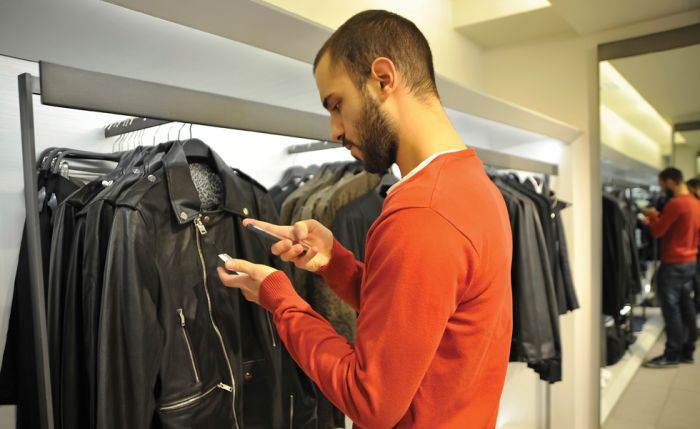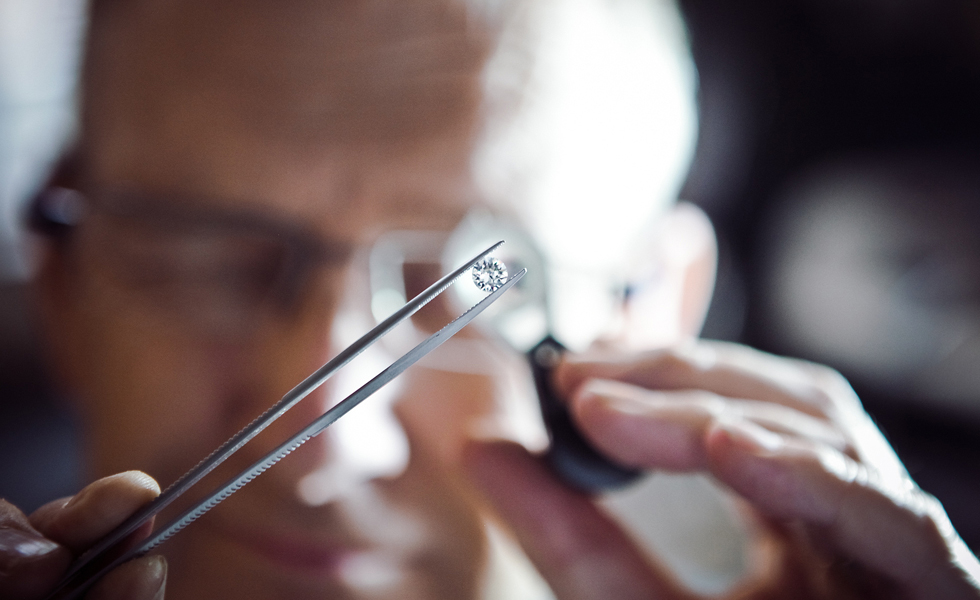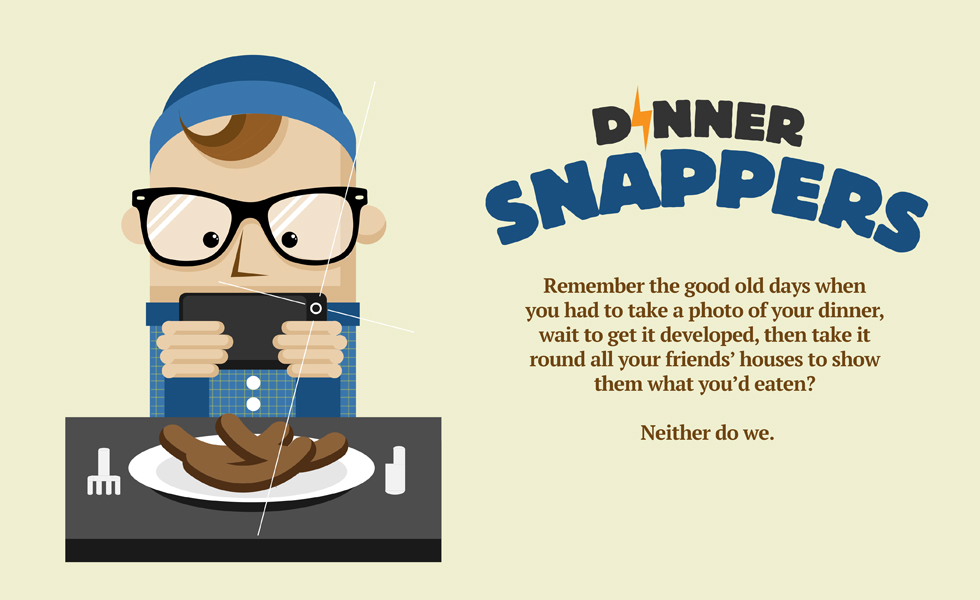How to maximise search in the age of omnichannel

Linking up what people are searching for and browsing online with what happens offline or in-store is one of the big challenges for marketers, who are trying to make the most of all that the digital and mobile world offers.
Figures from professional services firm BDO released earlier this month show plummeting bricks-and-mortar sales, with a 6.1% fall for April compared to the same time last year, the sharpest drop for seven years. But there was also a marked rise in online shopping, with BDO’s High Street Sales Tracker showing a 16.4% uplift in sales for the same period.
Bricks-and-mortar stores are also under pressure from ‘showrooming’ – searching online for similar products while in a shop to compare prices or find alternatives – with as many as 46% of Americans claiming to have done this, according to BI Intelligence. Blend this with ‘webrooming’, where people research online and then buy in-store, and the challenge to retailers is to make sure they have a presence wherever people are, across all touch points.
When it comes to search marketing, brands are working hard at linking what people are looking for online with what then happens in the ‘real’ world – and then measuring it. They appear to be spending ever-increasing marketing budgets on paid search (pay-per-click, or PPC), with Google’s advertising revenue up 16.2% to $18.02bn (£12.5bn) and paid clicks up 29% in the first quarter of 2016.
BMW, for example, has looked at paid search and its correlation to the number of people visiting its dealerships.
Nine out of 10 consumers research online when looking for a new car and BMW found that while 78% started with search, only 26% filled out an online form requesting more information. It wanted to see how effective a paid search campaign using Google would be, so it used its store visits metric.
Google Maps allows brands to marry up search data with location information, combined with survey information from a panel of one million people. BMW looked at this and could see that 3.5% of paid clicks on a Google AdWords paid search campaign resulted in visits to dealerships within 30 days across its 146 locations in the UK. This accounts for a return on investment of 173 to 1, according to the car manufacturer and Google.
 Paid search can work well for retailers of expensive products such as Nightingale‘s lab-made diamonds as a few conversions are very valuable
Paid search can work well for retailers of expensive products such as Nightingale‘s lab-made diamonds as a few conversions are very valuableLinking search to other channels
However, tracking what people search for online to what happens offline is a continuing challenge for brands. Celia Pronto, digital integration director at Casual Dining Group, says that social media is important in marketing its restaurant brands, which include Café Rouge, Las Iguanas and Belgo.
This, combined with a strong search presence, “means that people can find its outlets when they need them”, she says – often at the point of demand. “As an industry, we are very reliant on natural search and despite some experimentation with PPC this isn’t an ongoing part of the marketing mix.
“There is definitely huge opportunity to evolve in this area. Measurement remains a key issue, as with any other multichannel business, and tracking which activity resulted in [someone dining at a restaurant] in the absence of an offer is something we are working towards addressing.”
Meanwhile, Hyundai wanted to prove to internal teams that paid search campaigns were driving footfall, test drives and sales. Google’s annual auto shopper study suggests that most test drives were made with no appointment (63%), and 22% of people who had one made it via manufacturers’ online booking forms, making customers’ research and buying journeys harder to track.
The car brand ran AdWords campaigns involving two sets of keywords for six weeks and found that 3.4% of paid clicks resulted in a visit to a dealership within 30 days. For mobile searches, the rate was 4.9% of paid clicks.
Jay Karsandas, digital marketing manager at online-only retailer Mobiles.co.uk, says search is an integral part of the retailer’s strategy, with paid and organic search accounting for about 40% of web traffic and 30% of orders.
Karsandas says he has seen changes in people’s search behaviour over the past year, in that they will search for a deal, go to Mobiles.co.uk, then leave to look at a comparison or cashback site, so it is more important than ever for the brand to be present in all touch points. “For every search order we do, we do three orders in other channels and this is probably something we wouldn’t have looked at a few years ago,” he says.
“[In 2026] you might start your research not through search, but hop straight to Facebook”
Content is key to discoverability
Content is king in search engine optimisation (SEO), Karsandas adds. Mobiles.co.uk, which is part of the Dixons Carphone group, has shifted its content strategy toward a lifestyle focus, thinking about what people want to read rather than giving pieces a focus on technical aspects.
“We realised that the normal consumer doesn’t really care whether a phone has a processor 10 times better than another [or the] acronyms for it,” says Karsandas. “So we approached our SEO by looking at our customers before looking at the technical side and [thinking about] how we create SEO content that’s going to be relevant to the general consumer, and not just to the industry we sell [in]. That was a change in our strategy that’s been quite fruitful.”
Mobiles.co.uk moved away from doing several blogs a week as it found readership was low, and included more content in the main part of the website instead.
It also uses research pieces to draw people to the site through search and social media, such as the 4G Premier League, looking at which football grounds have the best mobile coverage. Luckily, Leicester City FC came out top, and then went on to win the real Premier League this month.
If necessary, Mobiles.co.uk will use paid social to give content a boost to start with, Karsandas says, and the brand finds that it will take off by people finding it organically afterwards. For a bigger campaign, the brand will use a social news site such as Hellou.co.uk to help spread content to its 4.7 million Facebook followers.
 Mobiles.co.uk has shifted towards lifestyle content to improve its search performance
Mobiles.co.uk has shifted towards lifestyle content to improve its search performanceThe rise of social search
What is the future for search marketing? It is no longer the ‘dark art’ it once was, where repetitive keywords could help a brand’s website appear higher up Google’s results pages; companies are now ranked on the quality of their content, including what they link to and from, and whether they ‘make the web a better place’.
Mobile search is ever-increasing for Mobiles.co.uk, and traffic to the site via smartphones accounts for 45% of all visitors. The site can tell which handset people are using and tailor content accordingly – perhaps showing a landing page with relevant upgrades.
Indeed, a new report suggests that 2.05 billion smartphones will be sold in 2020, up from 1.44 billion in 2015. ‘The future of ecommerce: the road to 2026’, commissioned by Criteo from research company Ovum, states: “By 2026, mobile will be the dominant (but not exclusive) channel for most brands, while in emerging markets, advertising will be a mobile-first experience.”
The report adds that global mobile ad revenues will increase from $22.6bn (£15.7bn) in 2014 to $63.9bn by 2019.
So with the pre-eminence of mobile, in 10 years’ time will consumers still start with a Google search when looking for products? Social media will become more important, according to Eden Zoller, principal analyst at Ovum and author of the report.
“[In 2026,] you might start your research not necessarily through search; you might hop straight on to Facebook and ask your peers for recommendations and advice. You can use a mobile app in a store to ‘showroom’ – to do your price comparisons.
“Or you might go to your trusted digital assistant [such as Apple’s Siri] who uses artificial intelligence to recommend things to you, making selections and arranging purchase.”
For online furniture retailer Made.com, SEO is less of a priority than social media, with the brand unlikely to change what it has in its showrooms as a result of what people are searching for, says commercial director Annabel Kilner.
“It’s quite hard for retailers to change what they are doing in store to fit with trends they are seeing on search, [but] what we do know from historical data is what people buy at what time and therefore can make sure that [our] showroom reflects that.”
The brand launches two new collections a week and has three showrooms in the UK, focusing on paid social to promote itself and working with Criteo as a display advertising network.
“Paid social is key. We are a visual company, we are about design, and the great thing about paid social is that whether it is Pinterest, Instagram or Facebook, they lend themselves very well to beautiful imagery. I believe that our spend will increase exponentially in those channels versus something like Google’s paid search.”
For Rich Pleeth, an ex-Googler and founder of friend-finding app Sup, the future is SEO combined with ASO, or app-store optimisation. “Our budget for marketing is tiny; it’s all about making the product better, and the team. If you are really smart with SEO and ASO, and content, then you can do a great job without spending a huge amount of money.”
Finding diamonds: how a jewellery business uses organic search to sell online
Jewellery business Nightingale is unusual in the UK: it sells diamonds that instead of being mined are made synthetically in a laboratory. Their chemical composition is exactly the same as ‘natural’ diamonds, but until recently their poor quality meant they were only suitable for industrial use, and not as gemstones.
But new techniques have changed this and a small number of labs are now making diamonds worldwide. This means the York-based jeweller, which sells online as well as having an office in the city, can tap into a niche but growing market for lab diamonds. With its unusual offering, it uses search marketing – organic and paid – to rank highly on results pages.
Discovering what people are searching for online also has an effect on what products the company stocks in-store. “Sometimes the quirks of search can affect aspects of that; for example, if a product is particularly popular online, or if we can be especially competitive, then that does change our priorities in terms of what we stock and what we buy in future,” says spokesperson Pete Wise.
Lab diamonds have recently attracted attention in the media, with headlines such as: ‘Would you buy a synthetic diamond?’ and ‘Would you propose with a lab-grown diamond?’ coming up when the term is searched for. As man-made gemstones are a new concept in the UK, Nightingale needs to provide extra information to people in the form of guides on its website. Wise advocates good-quality content to help consumers – as well as search engine rankings.
“It’s important to strike the right balance: it’s easy to take a website like ours and veer too far into becoming a digital publisher. What publishing on sites like ours should be about is transposing the knowledge that someone would get from a sales assistant in a shop onto a digital format. That perpetuates good relationships with customers.”
Wise explains that paid search works well for Nightingale, being an expensive product. “With a high-value product such as diamond jewellery it would be a shame to pass up that opportunity, because you don’t require a very high conversion rate to make some money. Paid search is also very good for increasing brand recognition, and that’s particularly important for a jewellery business.”
The brand is also able to get direct feedback from customers when they come into its shop as to how they found it – and the answer is often ‘through a Google search’. Nightingale is currently making a diamond ring for a customer in Austria who found the company in this way.









